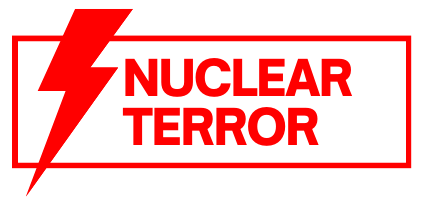So, you’re curious about the countries that have signed the Treaty on the Non-Proliferation of Nuclear Weapons (NPT), huh? Well, get ready to uncover a web of international agreements and diplomatic intricacies. As you delve into the topic, you’ll discover which nations have embraced this treaty’s principles and commitments, and which ones have chosen a different path. From major powers to infamous non-signatories, the world of nuclear weapons control is far from straightforward. So, let’s dig in and explore the fascinating landscape of the NPT, where nations come together in the pursuit of a safer world.
Establishment and Early Signatories
The establishment of the Nuclear Nonproliferation Treaty (NPT) in 1968 marked a significant milestone in international efforts to prevent the spread of nuclear weapons. The treaty was signed by the Soviet Union, the United Kingdom, and the United States, who were recognized as nuclear weapon states. These three countries made a commitment not to assist other states in obtaining or producing nuclear weapons. The NPT also included provisions for non-nuclear weapon states to forgo the development of nuclear weapons and to receive assistance in developing civilian nuclear power.
When the NPT was opened for signature in 1968, a total of 59 countries signed the treaty. The five nuclear-weapon states at the time, including the three initial signatories, were the United States, the Soviet Union (now Russia), the United Kingdom, France, and China. However, China and France did not sign the treaty initially, but eventually acceded to it in 1992.
The early signatories were divided into two categories: nuclear weapon states and non-nuclear weapon states. The nuclear weapon states were those countries recognized as possessing nuclear weapons at the time of the treaty’s establishment. The non-nuclear weapon states were those countries that did not possess nuclear weapons.
Non-Signatory Countries
Several countries have chosen not to sign the Nuclear Nonproliferation Treaty (NPT), which aims to prevent the spread of nuclear weapons. The decision of these countries has significant implications for global nonproliferation efforts and poses challenges to NPT compliance. Here are three key points to consider regarding non-signatory countries:
- Non-NPT Nuclear-Armed Countries: Some countries possess nuclear weapons without being party to the NPT. These countries include India, Israel, Pakistan, and North Korea. Their refusal to sign the treaty raises concerns about the effectiveness of the NPT in preventing the proliferation of nuclear weapons.
- NPT and Nuclear Disarmament Efforts: The NPT not only aims to prevent the spread of nuclear weapons but also calls for nuclear disarmament by the established nuclear-weapon states. The non-signatory countries’ absence from the treaty hampers efforts towards achieving global nuclear disarmament.
- NPT Compliance Challenges: The non-signatory countries’ refusal to join the NPT creates challenges for monitoring and verification of their nuclear activities. It becomes difficult to ensure that these countries are not engaged in the development or acquisition of nuclear weapons, undermining the goals of the treaty.
North Korea’s Involvement With the NPT
North Korea’s involvement with the NPT has been marked by both adherence and withdrawal. North Korea initially signed the NPT in 1985, demonstrating its commitment to nonproliferation and peaceful use of nuclear energy. However, in 2003, North Korea announced its withdrawal from the treaty due to concerns over its security and the perceived threat posed by the United States. This withdrawal raised significant concerns about North Korea’s nuclear program and its intentions.
The international response to North Korea’s withdrawal from the NPT has been largely critical. The international community, including the United Nations Security Council, has imposed sanctions on North Korea in an effort to curtail its nuclear ambitions. Diplomatic efforts have been made to engage North Korea in dialogue and negotiate a peaceful resolution to the nuclear crisis. However, these efforts have been met with mixed success, as North Korea continues to conduct nuclear tests and develop its nuclear capabilities.
The nonproliferation challenges with North Korea highlight the complexities of the NPT and its ability to effectively prevent the spread of nuclear weapons. North Korea’s withdrawal underscores the need for stronger enforcement mechanisms and stricter measures to deter states from pursuing nuclear weapons programs. The international community must continue to address the unique challenges posed by North Korea and work towards a peaceful and denuclearized Korean Peninsula.
Nuclear-Weapon States and Non-Nuclear-Weapon States
Nuclear-weapon states and non-nuclear-weapon states play distinct roles in the Nuclear Nonproliferation Treaty (NPT), which aims to prevent the spread of nuclear weapons and promote disarmament. Here are three key points to understand about this dynamic:
- Nuclear weapon states: The NPT recognizes five countries as nuclear-weapon states, namely the United States, Russia, the United Kingdom, France, and China. These countries possessed nuclear weapons before the treaty’s establishment and are allowed to keep their arsenals. However, they are expected to work towards disarmament and not assist other states in obtaining nuclear weapons.
- Non-nuclear weapon states: The majority of countries that signed the NPT are non-nuclear-weapon states. These countries commit to abstaining from the development or acquisition of nuclear weapons. In return, they are entitled to access peaceful nuclear technology for energy purposes. Non-nuclear-weapon states also rely on nuclear-weapon states’ commitment to disarmament.
- Establishment and early signatories: When the NPT was opened for signature in 1968, 59 countries signed it. The three major nuclear-weapon states at the time, the United States, the Soviet Union, and the United Kingdom, were among the early signatories. China and France, recognized nuclear-weapon states, did not initially sign the treaty but eventually joined in 1992. North Korea signed the NPT in 1985 but later withdrew in 2003.
It is worth noting that some countries, such as India, Israel, and Pakistan, have refused to sign the NPT altogether, while others possess nuclear weapons but are not party to the treaty. The NPT continues to face challenges and criticisms, particularly regarding its effectiveness in preventing nuclear proliferation and achieving disarmament.
NPT Membership and Withdrawals
As we shift our focus to the subtopic of NPT Membership and Withdrawals, it is important to examine the countries that have chosen to either join or withdraw from the Nuclear Nonproliferation Treaty (NPT). The NPT currently has 191 parties, with five countries identified as nuclear-weapon states when the treaty was opened. However, there have been instances of countries choosing to withdraw from the NPT. One notable example is North Korea, which joined the NPT in 1985 but withdrew in 2003. The reasons for withdrawal vary, but they often stem from a country’s dissatisfaction with the treaty’s provisions or perceived violations by other parties. The international response to such withdrawals has been mixed, with some countries expressing concern and urging for compliance, while others have been more lenient or even supportive. The impact of these withdrawals on disarmament efforts is a subject of debate, as some argue that they undermine the credibility of the nonproliferation norm, while others believe that they highlight the need to strengthen and enforce the treaty. Overall, NPT membership and withdrawals present challenges to the effectiveness and universality of the treaty, requiring ongoing efforts to address compliance issues and ensure global nonproliferation.
Effectiveness and Controversies Surrounding the NPT
The effectiveness and controversies surrounding the Nuclear Nonproliferation Treaty (NPT) have been the subject of ongoing debate and analysis. Here are three key points to consider:
- Effectiveness Debate: The NPT has been praised for creating a norm against the proliferation of nuclear weapons and supporting peaceful nuclear energy use. However, there is disagreement among parties regarding its overall effectiveness. Some experts argue that the treaty has been successful in preventing the spread of nuclear weapons, while others believe it is not as influential as initially thought.
- Nonproliferation Challenges: The NPT faces numerous challenges, including the increasing number of countries with nuclear weapons and the lack of a strong safeguard against rogue states using nuclear technology for weapons. The emergence of noncompliance incidents, such as North Korea’s withdrawal from the treaty and allegations of uranium enrichment facilities in Iran, further complicates the nonproliferation efforts.
- Disarmament Efforts and Terrorist Group Threat: While the NPT aims to lead to eventual nuclear disarmament in countries with nuclear weapons, progress in this area has been slow. Additionally, the treaty does not directly address the possibility of nuclear weapons falling into the hands of terrorist groups, which remains a significant concern in the global security landscape.
Additional Agreements and Treaties
Additional agreements and treaties play a crucial role in addressing specific challenges and shortcomings of the Nuclear Nonproliferation Treaty (NPT). These additional agreements aim to strengthen the NPT’s safeguards measures, promote nuclear disarmament, and ensure the peaceful use of nuclear technology while addressing the concerns posed by rogue countries.
One key additional agreement is the Comprehensive Safeguards Agreements (CSAs) established by the International Atomic Energy Agency (IAEA). These agreements require member states to allow IAEA inspections of their nuclear facilities to verify that they are being used for peaceful purposes and to prevent the diversion of nuclear material for weapons development. CSAs help enhance transparency and build confidence among states, contributing to the nonproliferation objectives of the NPT.
Another important agreement is the Treaty on the Prohibition of Nuclear Weapons (TPNW), which entered into force in January 2021. Although not supported by nuclear-weapon states, the TPNW represents a significant step towards nuclear disarmament, as it prohibits the development, production, testing, acquisition, possession, and use of nuclear weapons. It aims to delegitimize nuclear weapons and create political pressure for disarmament.
Additionally, various bilateral and multilateral agreements have been signed to address specific challenges related to nuclear nonproliferation. These agreements focus on areas such as export controls, nuclear security, and the peaceful use of nuclear energy. They provide a framework for cooperation and coordination among states, helping to prevent the spread of nuclear weapons and mitigate the risks associated with their proliferation.


